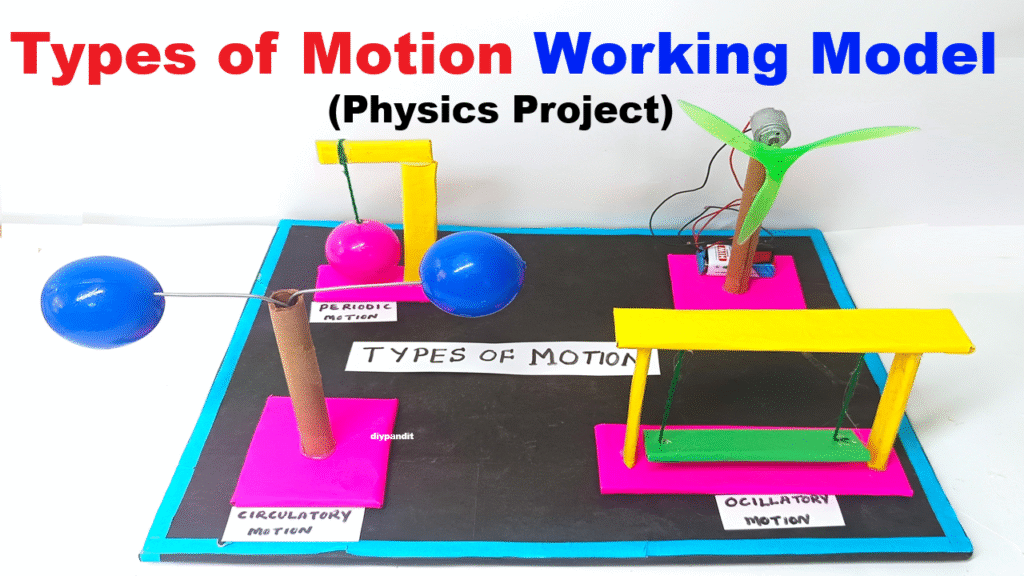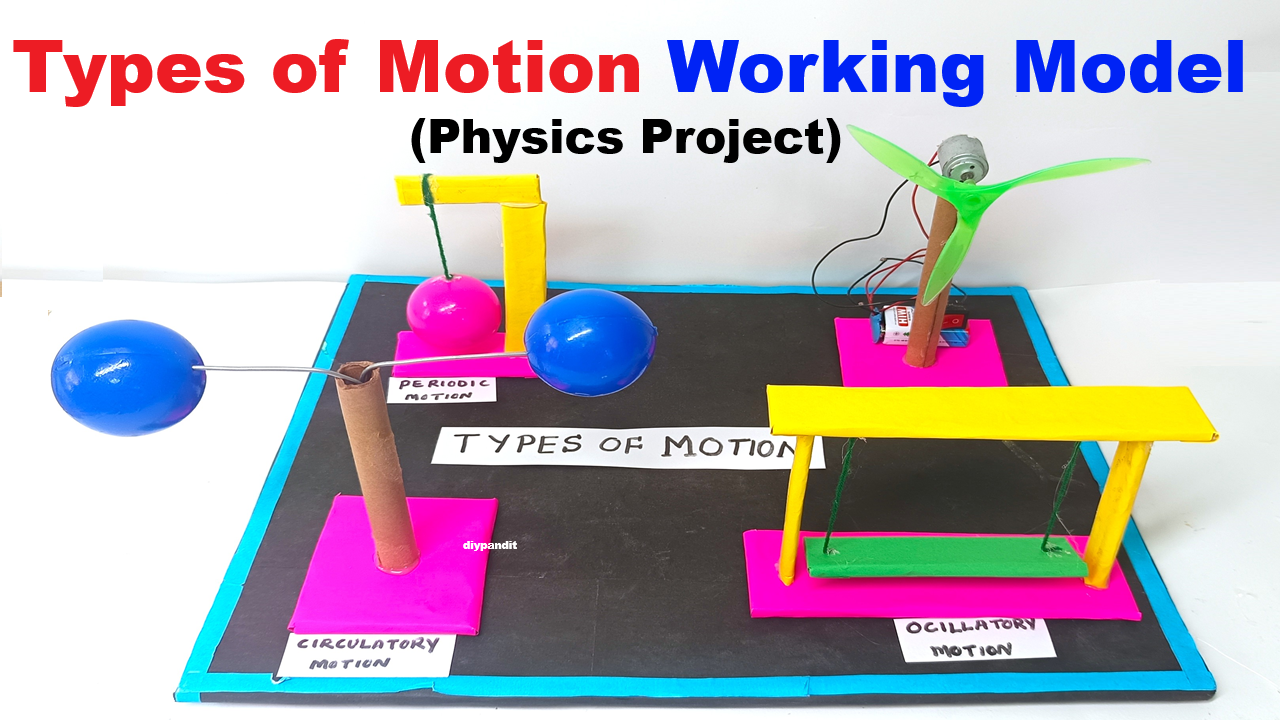1. Introduction to Motion
Motion is one of the most fundamental concepts in physics. It describes the change in position of an object with respect to time.

From the planets revolving around the sun, the movement of vehicles on the road, the swing of a pendulum, to the microscopic motion of particles inside matter – motion is everywhere.
In physics, the study of motion helps us understand the natural laws that govern our universe. It is closely related to mechanics, which is the branch of physics that deals with the motion of objects and the forces acting upon them.
2. Historical Background
The study of motion dates back to ancient times.
- Aristotle (384–322 BC): Believed that a force was necessary to keep objects in motion. His ideas dominated for centuries but were later proven incorrect.
- Galileo Galilei (1564–1642): Conducted experiments and established that objects fall with the same acceleration regardless of mass. He also emphasized the role of inertia.
- Isaac Newton (1642–1727): Gave the three laws of motion that form the foundation of classical mechanics. Newton also developed the law of universal gravitation.
The work of these scientists laid the foundation for modern physics.
3. Types of Motion

Motion can be classified into various types:
- Translational Motion – When a body moves from one point to another in a straight line or along a curved path.
- Rectilinear Motion (straight-line)
- Curvilinear Motion (curved path)
- Rotational Motion – When a body rotates about an axis, e.g., a spinning top.
- Oscillatory Motion – Back and forth movement about a mean position, e.g., pendulum.
- Circular Motion – Motion in a circular path, e.g., motion of planets around the sun.
- Random Motion – Irregular motion without a definite path, e.g., movement of dust particles in air.
4. Distance and Displacement
- Distance: The actual length of the path travelled by an object. It is a scalar quantity.
- Displacement: The shortest straight-line distance between the initial and final position of an object, along with direction. It is a vector quantity.
Example: If a student walks 4 m east and then 3 m north, the distance is 7 m, but displacement is √(4² + 3²) = 5 m.
5. Speed, Velocity and Acceleration
- Speed: Distance travelled per unit time. It is scalar.
- Velocity: Displacement per unit time. It is vector.
- Acceleration: The rate of change of velocity with time.
Types of Acceleration:
- Uniform acceleration (constant)
- Non-uniform acceleration (variable)
Example: A freely falling object has uniform acceleration due to gravity (9.8 m/s² on Earth).
6. Graphical Representation of Motion
Graphs are powerful tools to represent motion:
- Distance-Time Graph – Shows how distance changes with time. A straight line indicates uniform speed.
- Velocity-Time Graph – Shows velocity vs. time. The slope gives acceleration, and the area under the curve gives displacement.
- Acceleration-Time Graph – Represents acceleration variation.
7. Newton’s Laws of Motion

- First Law (Law of Inertia): An object remains in a state of rest or uniform motion unless acted upon by an external force.
- Second Law: Force is equal to the rate of change of momentum. Mathematically, F = ma.
- Third Law: For every action, there is an equal and opposite reaction.
These laws explain almost all physical phenomena around us.
8. Uniform Circular Motion

When an object moves in a circle at constant speed, its velocity changes direction continuously, hence it experiences acceleration called centripetal acceleration.
Formula:
- Centripetal Force = mv²/r
Where m = mass, v = velocity, r = radius of the circle.
Examples: satellites orbiting Earth, vehicles turning on curved roads.
9. Equations of Motion and Derivations
- v = u + at
- s = ut + ½at²
- v² – u² = 2as
Where:
- u = initial velocity
- v = final velocity
- a = acceleration
- s = displacement
- t = time
These equations are derived using graphical and mathematical methods.
10. Relative Motion
Relative motion is the calculation of the motion of an object with respect to another moving object.
Example: If two cars move in the same direction at 60 km/h and 50 km/h, their relative speed = 10 km/h.
11. Daily Life Applications of Motion
- Vehicles on roads follow equations of motion for acceleration and braking.
- Trains use uniform acceleration and deceleration while moving between stations.
- Planets revolve around the sun due to centripetal force.
- Rockets and missiles use Newton’s third law for propulsion.
- Sports like cricket, football, and athletics all involve the application of motion principles.
12. Advantages and Limitations of Motion Studies
Advantages:
- Helps in designing efficient transport systems.
- Important in space research, satellites, and astronomy.
- Useful in sports science, biomechanics, and medical studies.
Limitations:
- Real-life motion is often complex due to friction, air resistance, and variable forces.
- Classical mechanics fails at very high speeds (near the speed of light), where Einstein’s relativity is needed.
13. Conclusion
Motion is a universal and essential phenomenon. Understanding motion allows us to predict and control the physical world, from the simplest daily activities to the most advanced space explorations.
Newton’s laws, equations of motion, and graphical analysis provide powerful tools to study motion scientifically.
This project enhanced my understanding of the concepts of physics and showed me how motion governs every aspect of life and the universe.
14. Bibliography
- NCERT Physics Textbook – Class 9 & 11
- H.C. Verma, Concepts of Physics
- Resnick, Halliday & Walker, Fundamentals of Physics
- Internet sources: Physics Classroom, Khan Academy

